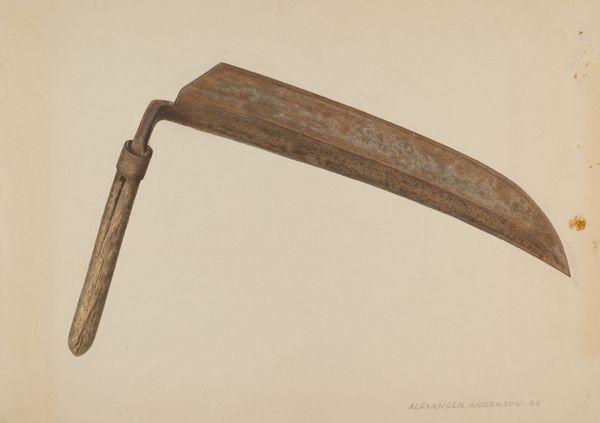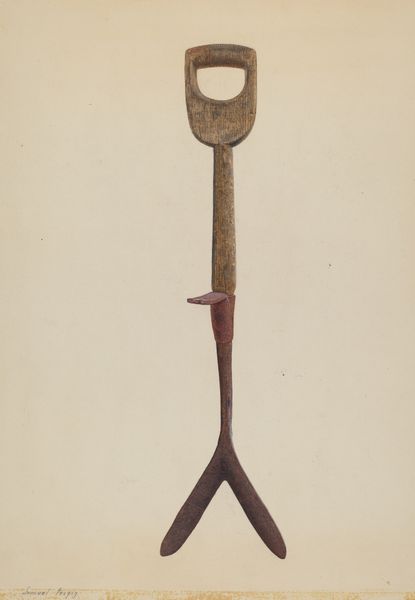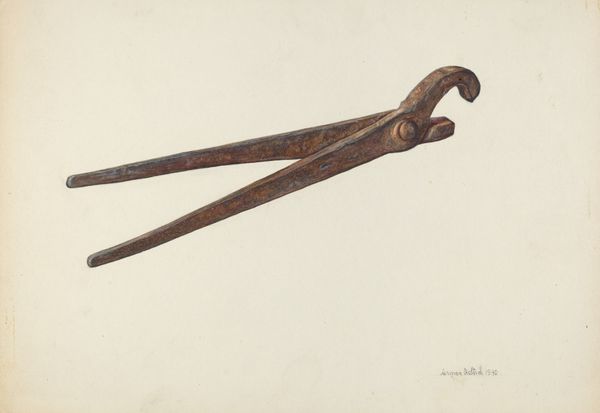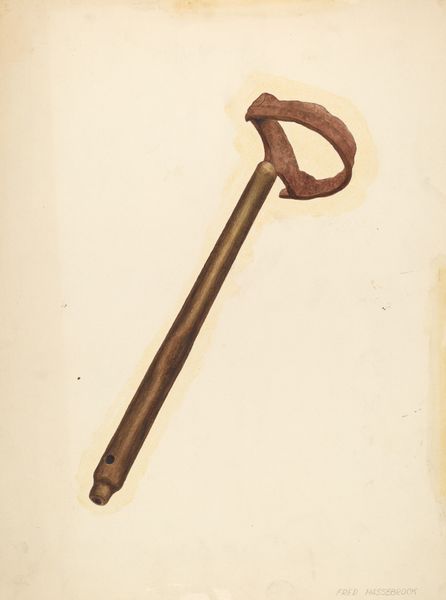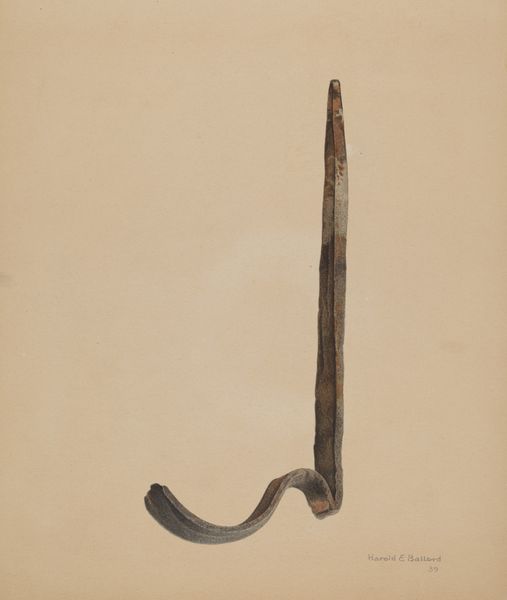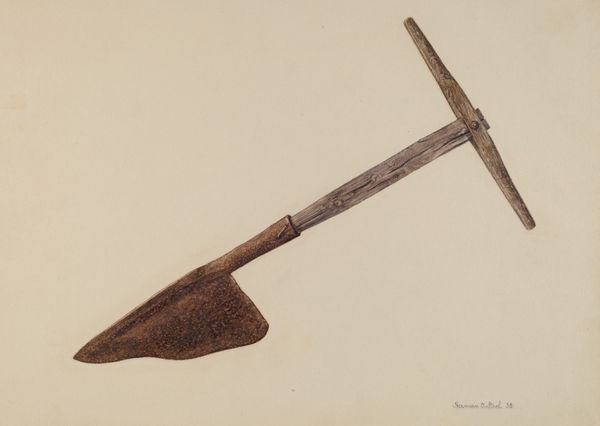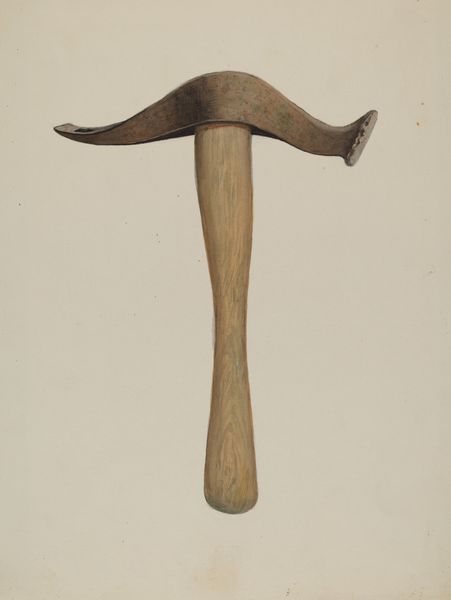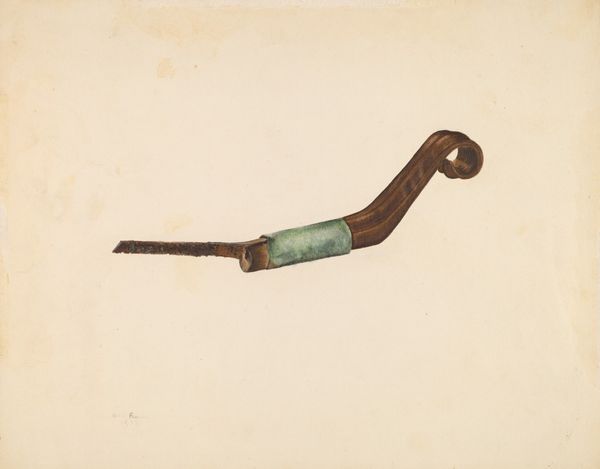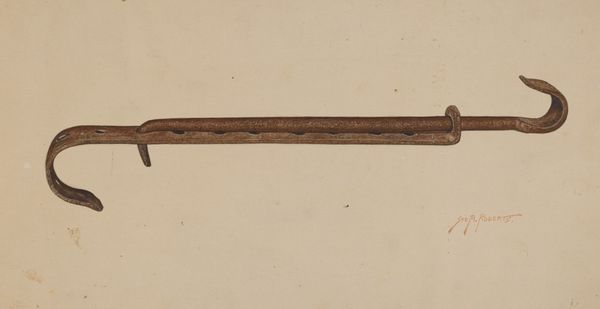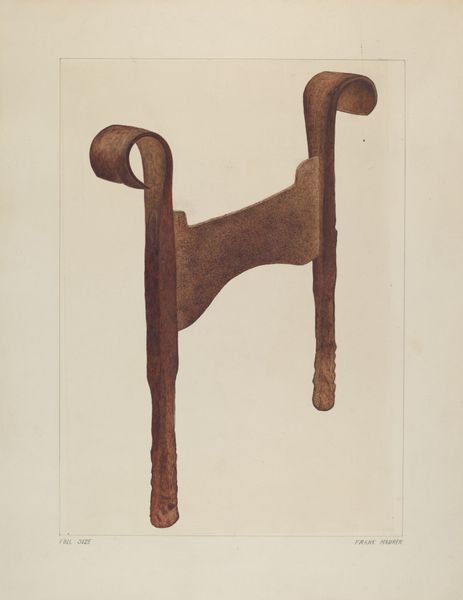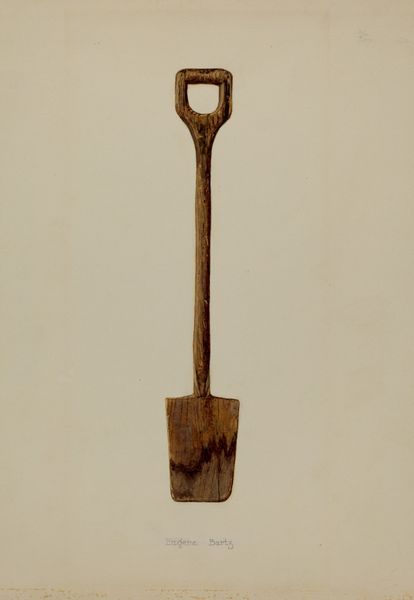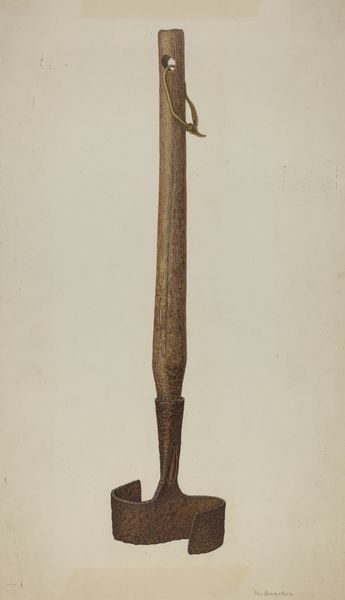
drawing, watercolor
#
drawing
#
charcoal drawing
#
watercolor
#
watercolor
#
realism
Dimensions: overall: 35.3 x 45.5 cm (13 7/8 x 17 15/16 in.)
Copyright: National Gallery of Art: CC0 1.0
Curator: This is William Frank's "Hawsing Iron," created in 1939. It's rendered in watercolor and charcoal. It feels immediately grounded, unpretentious. Editor: There's something so striking in its simplicity. The palette is so muted; it draws your eye right to the rust. I’m intrigued by its scale relative to the sheet of paper. It looks substantial, weighty. Curator: Frank was deeply interested in labor and its relationship to identity. This piece, to me, speaks volumes about the daily realities of working-class communities in the 1930s. Hawsing irons, after all, were essential tools, particularly within maritime work—the act of “hawsing” referring to towing ships. Editor: Yes, exactly! The choice of representing a well-used tool focuses our attention to the physical processes. The material suggests its own history: the rusting, the dark stains at the bit of the axe… these speak to the real labor it performed. I’d want to examine similar depictions of labor in other contexts as well to better understand it. Curator: Thinking about intersectional theory, consider who would wield such a tool—likely men from marginalized economic backgrounds, a fact further emphasized by the Great Depression setting in the US in the 1930's. We can use art to better comprehend experiences that have shaped our worldviews. Editor: And it highlights the interplay between use and decay, almost anthropomorphizing the tool itself. It begs a further examination of its making, use, repair. Are we romanticizing the dignity of physical labor, or really reflecting the daily grind? Curator: It is through questioning what's been presented in history, understanding art's significance, and examining intersectional connections of identity that we start developing comprehension. This piece represents a starting point, don't you think? Editor: Agreed. This artwork reminds us to explore and value the stories embedded within ordinary objects, pushing us to explore the material reality that they represent and their production in context of the larger systems of work.
Comments
No comments
Be the first to comment and join the conversation on the ultimate creative platform.
